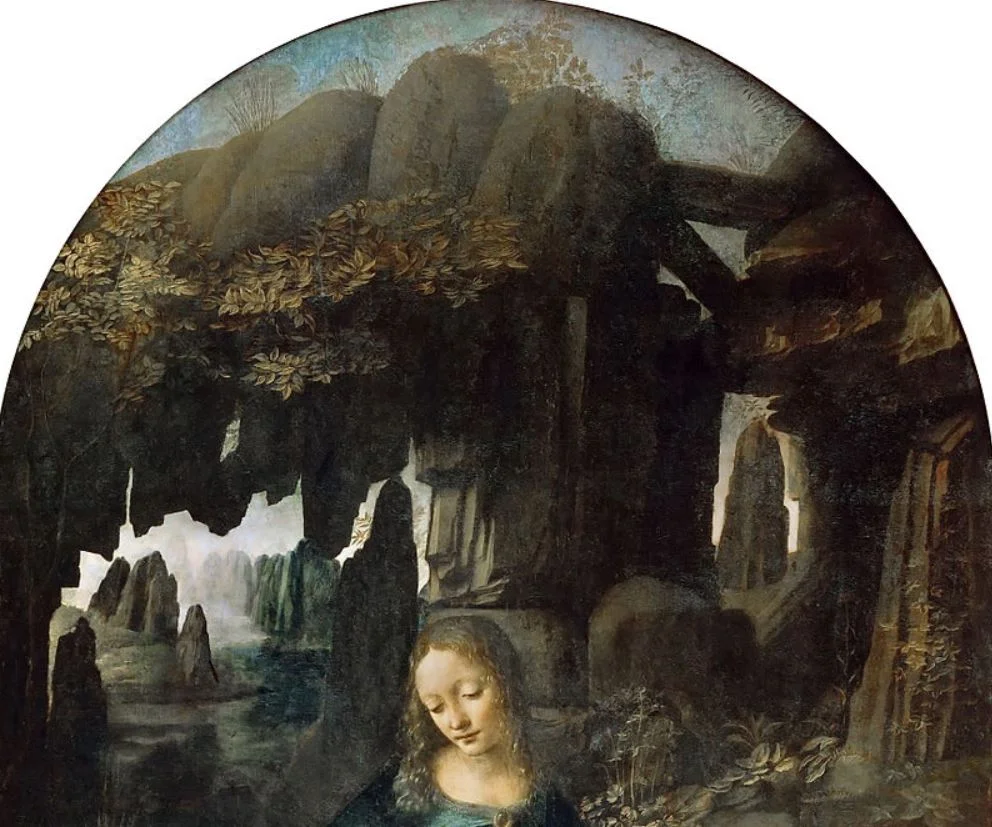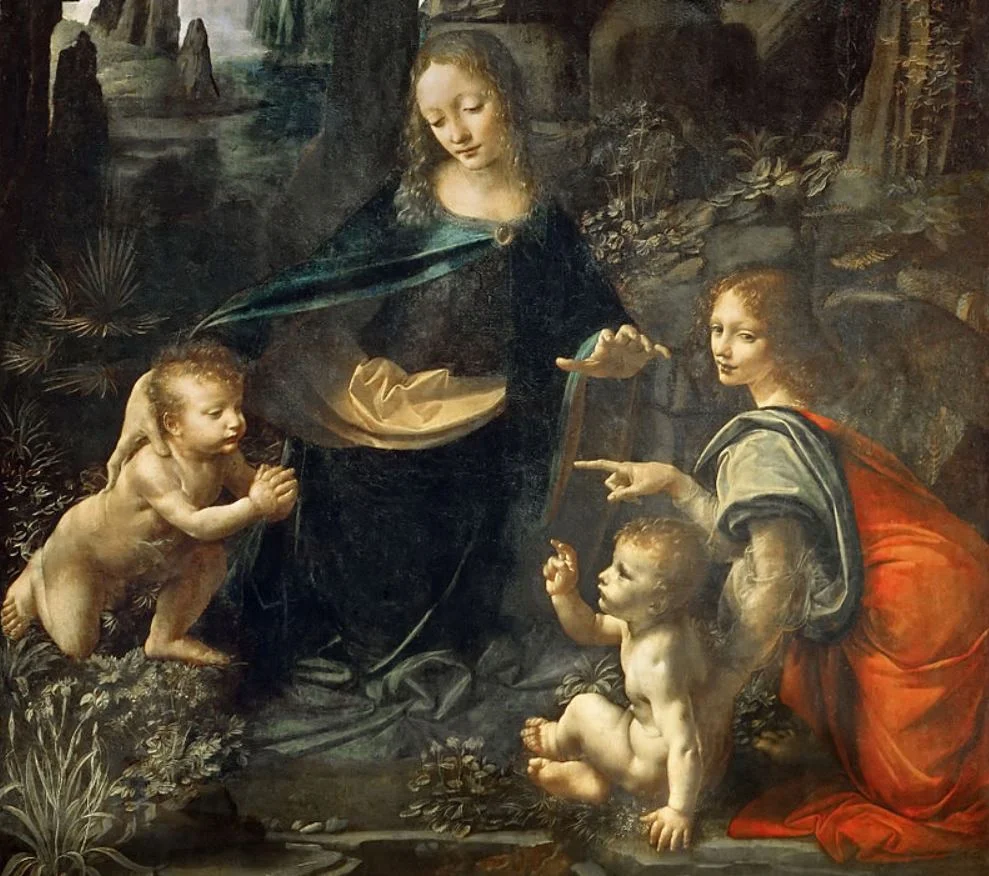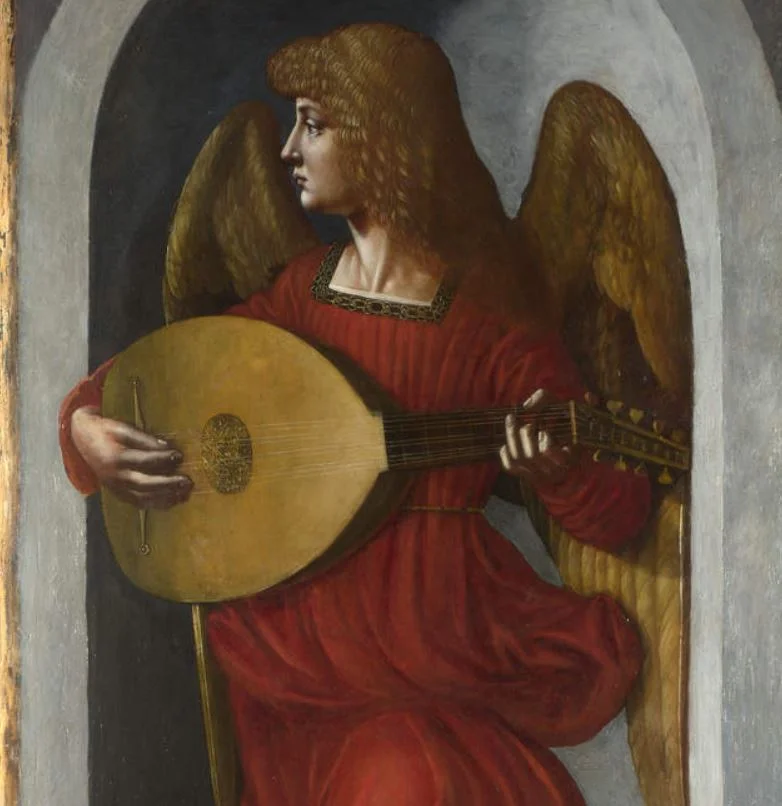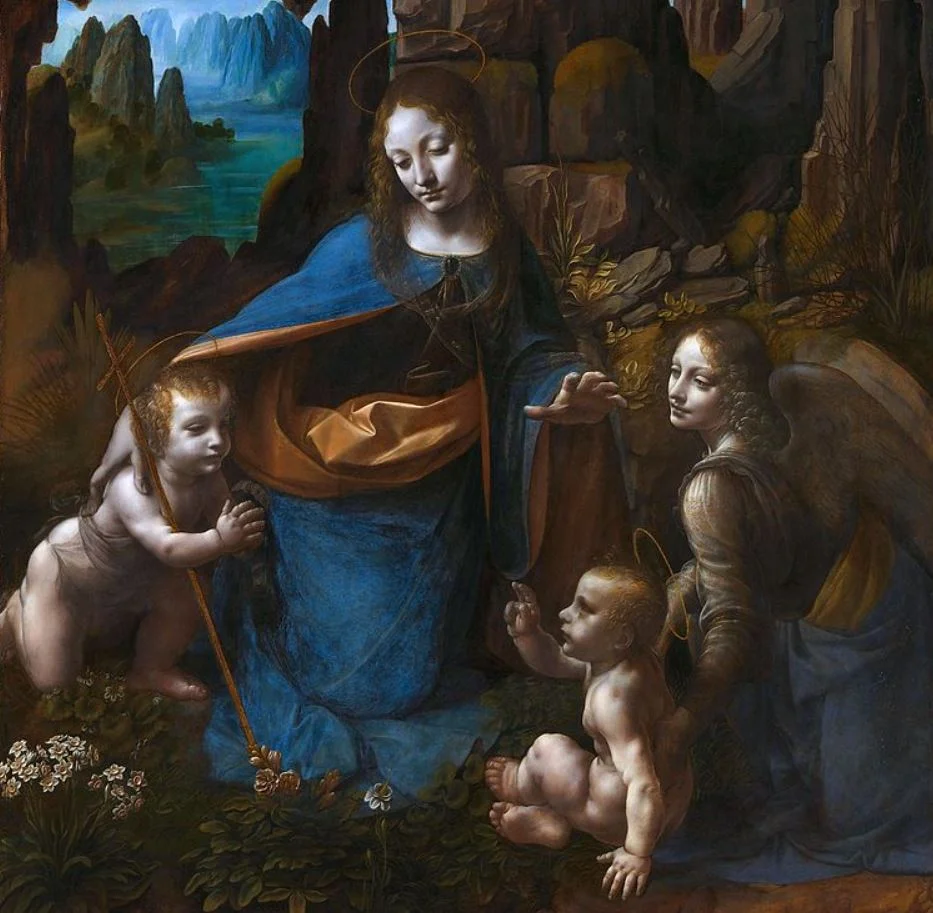Even though Leonardo da Vinci didn’t leave behind a huge number of paintings, some of his works are considered to be the most famous works of art ever created.
The works of Da Vinci we’ll examine in this post (yes, plural for a particular reason) are generally known as “Virgin of the Rocks” or “Madonna of the Rocks.”
What are the secrets of these masterpieces by one of the greatest masters of the Renaissance? Let’s take a closer look.
1. The name of the painting refers to 2 different artworks
When we talk about the painting known as “Virgin of the Rocks,” we actually refer to 2 different paintings by Leonardo da Vinci with the same subject.
One version, which is considered to be the original (even though that’s still up for debate), is located in the Louvre Museum in Paris. The other version is located in the National Gallery in London.
Both paintings are therefore sometimes called the “Louvre Virgin of the Rocks” and “London Virgin of the Rocks” as well to make this distinction.
The original painting was presumably created between 1483 and 1486, which means that Leonardo, being born in 1458, was only in his mid-twenties when he started working on it.
The exact date of the version in London is unknown and is simply stated as being painted “before 1508” without any more details.
2. The setting of the work gives the painting its name
The painting was given its name because of the remarkable setting in which the subjects were painted.

They appear to be located within a cave as the background depicts some sort of rock formation. Behind the rock formation, we can also see a landscape with mountains and water.
While this wasn’t uncommon with scenes of the Nativity, this type of rock formation in the background was unseen before Leonardo created it.

3. The theme of the painting was common during the Renaissance
The painting depicts a non-Biblical event in which the Archangel Uriel escorts the infant John the Baptists to Egypt. He heard about a rumor in which King Herod, the Roman client king of Judea at the time, was planning to kill the child, Jesus.
On his way to Egypt, he meets with the Virgin Mary and the child Jesus and brings them to safety in the rocky setting we can see in the painting, together with the Archangel Uriel.
This entire event isn’t mentioned in the Bible but the adoration of John the Baptist of the child Jesus was a quite common theme during the Renaissance.
Some of the greatest artists of the time painted a version of this story, including masters such as Raphael, Michelangelo, and Fillipo Lippi.
4. The original version is sightly taller than the London version
Have you ever seen the Mona Lisa Painting in the Louvre? Then you surely know that Leonardo da Vinci didn’t become world-famous for paintings of monumental dimensions (except for The Last Supper, which was actually a fresco)
He clearly outdid himself with this one because this oil on panel painting has dimensions of 199 × 122 centimeters (78.3 × 48.0 inches).
Then again, his level of energy was surely much higher back then during his mid-twenties than a couple of decades later in the early 16th century.
Even though many historians agree that the London version wasn’t entirely by the hand of Leonardo (some assistants helped him), it’s even bigger as it stands 8 centimeters (3 inches) taller.
5. The differences between the two paintings are in the details
The setting between the Louvre and London versions is exactly the same but there are quite a few differences between the two paintings, apart from their size.
One of the main differences, and which is the easiest way to differentiate both works, is that the angel’s right hand is raised in the Louvre version, and his/her index finger points towards John the Baptist. In the London version, the angel’s right-hand rests on his/her knee.
Other differences between the two versions are:
- The eyes of the angel are facing the viewer in the Louvre version. In the London version, they gaze downward.
- The background of the London version is way more detailed than the one in the Louvre version which appears to be quite hazy.
- The colors of the clothes worn by the angel are way more bright in the Louvre version and include bright red.
- The haloes are missing in the Louvre version, as well as the cruciform staff that John the Baptist is holding.
- The flowers in the Louvre version are botanically accurate as opposed to the London version.

More interesting facts about The Virgin of the Rocks by Leonardo da Vinci
6. The commission of the painting was detailed in a contract that was signed on April 25, 1483. The painting was to serve as an altar price for the Chapel of the Immaculate Conception in Milan.
Remarkably, apart from Leonardo da Vinci this also included two other men, the brothers Ambrogio and Evangelista de Predis. It’s assumed that Ambrogio was also a painter and his brother helped the two men in preparing the colors.
7. There was some sort of dispute between Leonardo and the Confraternity that commissioned the painting. After paying 800 Lire for the main panel of the work, Leonardo requested an additional 1,200 Lire which was stipulated in the contract, but only received 100 Lire.
Ludovico Sforza, the Duke of Milan and the future patron of Leonardo intervened and ensured the painting was the be valued by experts for the final payment to be made.
8. Whether or not Leonardo received the entire amount remains unclear, but the fact that one of the brothers who helped him appealed again in 1503 makes us assume he didn’t. The final evaluation was made in 1506 but Leonardo wasn’t present in Milan at the time.
Ambrogio eventually completed the remaining work on the painting and received 200 Lire as compensation, something that Leonardo was made aware of as well. The side panels of the completed altarpiece are now located in the National Gallery in London.

9. The chapel in which the painting was hung upon completion was demolished in 1576 and the history of both paintings remains unclear afterward. It’s assumed the Louvre version entered the museum’s collection after it ended up at the Palace of Fontainebleau.
The London version was initially bought by Scottish painter and dealer Gavin Hamilton for 1,582 Lire in 1785. It changed hands a few times more the following century and ended up being bought by the National Gallery for 9,000 guineas in 1880.
10. The London version has undergone an extensive renovation between 2008 and 2010. The biggest change was made to the Louvre version though in the early 19th century.
The painting in the Louvre was transferred from its wooden panel to canvas back in 1806 but hasn’t undergone any other renovation ever since.
11. Just like ith every other painting he created, Leonardo made extensive studies to paint the figures. One of these studies depicts a young woman’s head.
This study is now part of the collection of the Royal Library of Turin, together with the presumed red-chalk self-portrait Leonardo made at an old age.

12. It was initially presumed that the London version was entirely by the hand of Leonardo’s assistant, Ambrogio de Predis. The recent renovation of the work put all doubts aside and clearly indicates that most of the painting was by the hand of Leonardo himself.
The main difference between the two paintings is the fact that da Vinci had most probably reached his maturity while painting the London version, while the Louvre version was painted much earlier.

